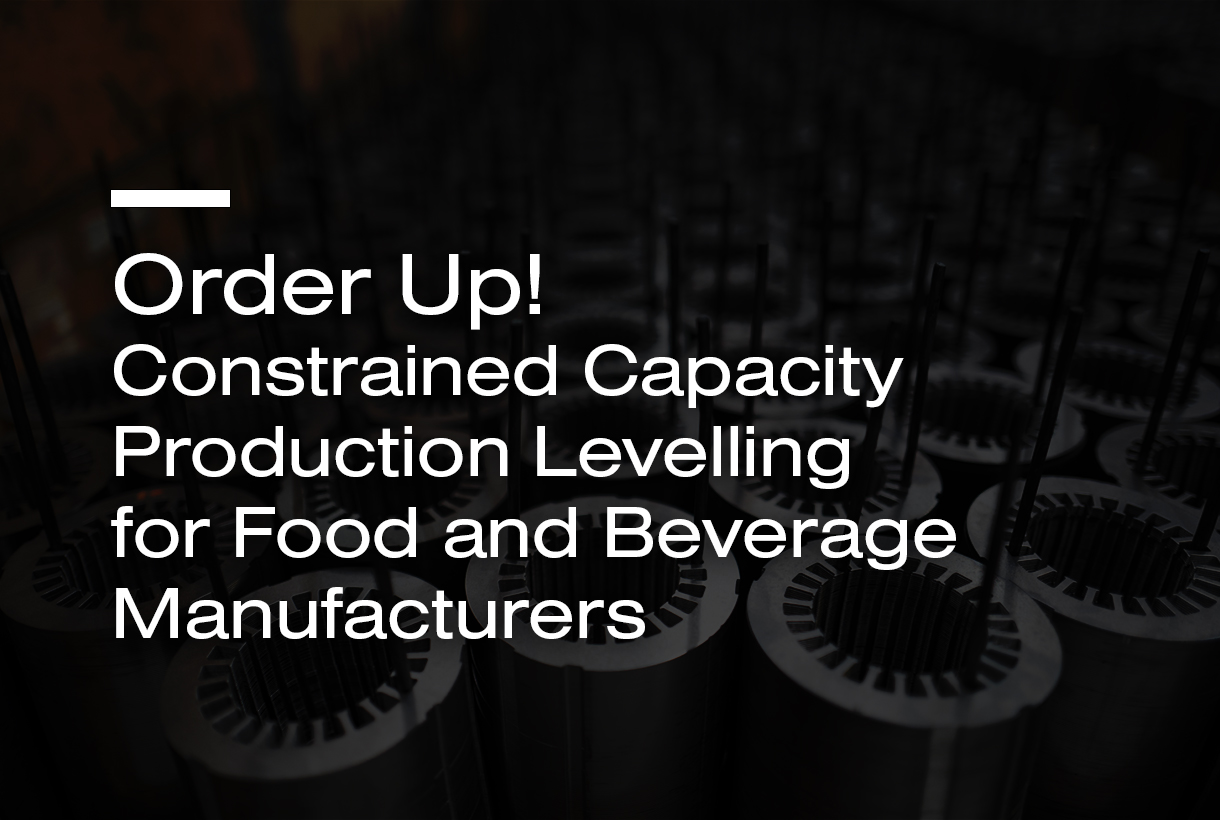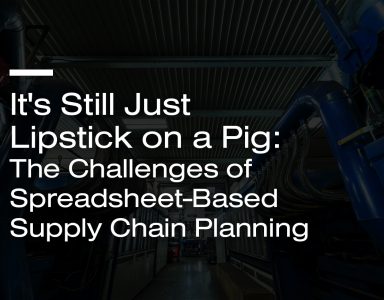
The food and beverage industry continues to encounter new challenges and compound those already unique to their world. Fertilizer shortages, rising prices, and other disruptions amid higher demand and high growth have made supply chain planning more complex.
To address these challenges and keep the food and beverage industry humming along, Plex DemandCaster has released enhancements to its Constrained Capacity Production Leveling solution.
These enhancements ensure that food and beverage companies can confidently manage their demand and supply challenges in any environment.
New Features and Enhancements
The new features in Constrained Capacity Production Leveling focus on usability. Plex DemandCaster’s commitment to complete visualization means that information is presented to users in a way that empowers action.
Comparing Orders to On-Hand Inventory
Every planner runs into capacity constraints at some point. Constrained Capacity Production Leveling allows planners to call out the specific constraints to understand what is scheduled against a line.
Using inventory, users see what is on hand. The lines are color-coded so a planner can understand whether specific production orders in the queue will put inventory supplies at risk. Those exceeding on-hand supply are shown in red, and those within the constraints of the supply are shown in green.
Attribute-Based Scheduling
Food and beverage companies have unique issues related to allergens. Controlling these allergens efficiently means that production can better handle the threat of cross-contamination. The new enhancements in Constrained Capacity Production Leveling let planners schedule based on attributes.
Many products have similar attributes, so scheduling them together makes control protocols easier to manage while remaining diligent and compliant. The software has a tool that allows them to see product attributes in sequence and group them.
Attributes are color coded to help specify which products to run together and in what order. This feature also helps reduce changeover downtime to optimize production efficiency between product runs.
Supplier Constraint Planning
The new features allow planners to tie constraints to vendors. Because one vendor can impact an entire production plan, using software to tie constraints to vendor actions and performance lets planners understand what they can produce based on this data.
The system now provides a cumulative lead time calculation based on inventory, BOMs, and orders. By visualizing the entire supply chain lead time, planners can set a frozen lead time that encompasses all components in a product and helps develop buffer strategies for contingencies.
And because the vendor has access to the system data, chances for disruption are reduced. This helps drive a stable supply and build trust in the supplier relationship.
Why Constrained Capacity Production Leveling is Critical for Food and Beverage Companies
With expiration, tight regulation, and other factors, food and beverage manufacturers will find Constrained Capacity Production Leveling critical for their operations for several reasons.
The software can list lot expirations for all components in a product. Because these dates are visible to planners, it helps in planning production times, reviewing lead times, and managing the possibility of expedited components.
The software also helps manage production yield issues. Production data on overtime, yield loss, and other variables are usually gross estimations. Some products or components may be more stable, and some may have a higher than reported yield loss.
The new software enhancements allow the system to recognize what yield losses are between operations. The losses can be accounted for automatically in scheduling and inventory to ensure accuracy.
The Value of Constrained Capacity Production Leveling on Finite Scheduling
Different products have different levels of complexity in their production. Some may have single-level or simple BOMs, while others require multi-level BOMs and numerous sub-processing operations.
Constrained Capacity Production Leveling enhancements help planners schedule multiple operations on complex BOMs. Finite scheduling can enable optimization of production to match downstream needs while taking constrained capacity into account.
Constrained Capacity Production Leveling allows a longer schedule window to determine feasible jobs. Planners can review demand and account for it in the long term, so when the time comes for finite scheduling in short-term production scheduling, they already have a feasible and realistic schedule given constraints.
Using Constrained Capacity Production Leveling in Food and Beverage
The enhancements to Plex DemandCaster’s Constrained Capacity Production Leveling are included with the software and are automatically updated for existing customers who use the system.
If you’d like to learn how Plex DemandCaster’s Constrained Capacity Production Leveling features in their advanced requirements planning solution can work for you, contact us to get started.


